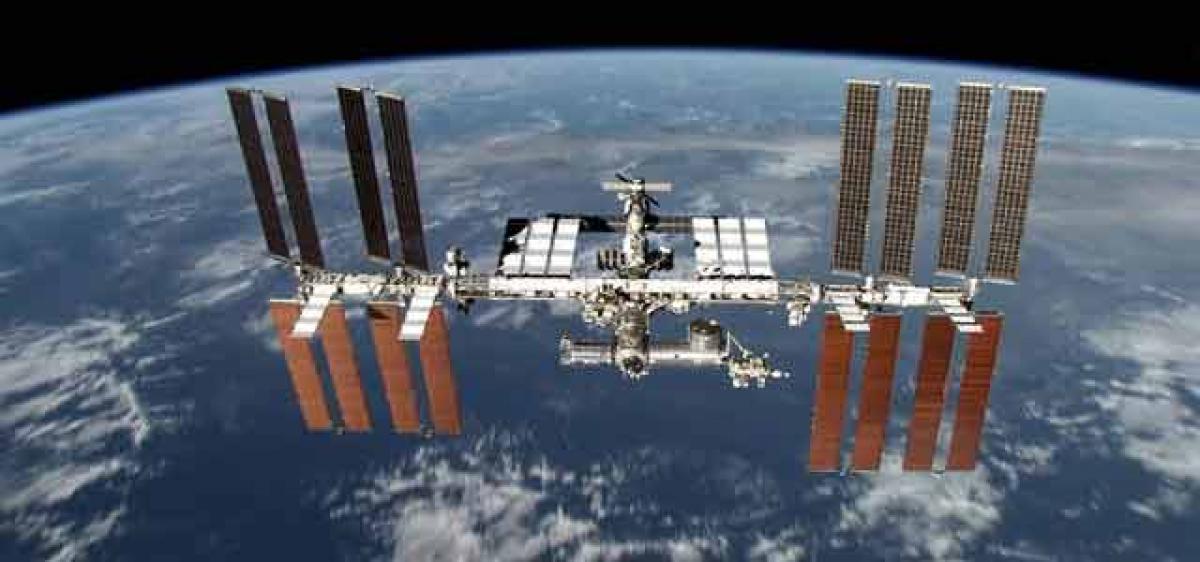Live
- Police high-handedness sparks outrage in Kodangal
- Khichi elected mayor of Delhi
- Sports enthusiasts encouraged to focus on achieving their goals
- SC agrees to hear plea related to Delhi pollution
- Srikakulam: Cooperative Week celebrations take off
- National Library Week celebrations begin
- Bringing joy to MPP schoolchildren
- Contaminated food worth Rs 52,000 disposed
- BJP MLA warns of protest over Panchamasali reservation demand
- Sunspots and solar flares can affect Earth’s surface
Just In

NASA has informed that the International Space Station (ISS), which serves as a microgravity and space environment research laboratory for crew members to conduct experiments, can be watched from the earth at various locations.
NASA has informed that the International Space Station (ISS), which serves as a microgravity and space environment research laboratory for crew members to conduct experiments, can be watched from the earth at various locations. People do not need any devices to watch it when it is 40 degrees or more above the horizon.
The space station will be visible because it is reflecting light from the Sun which means even when the Moon hasn’t risen, you’ll still be able to see the space station. However, unlike the Moon, the space station isn’t bright enough to see during the day. It can only be seen when it is dawn or dusk at your location. Sighting opportunity can range from one a month to several a week, since it has to be both dark where you are, and the space station has to happen to be going overhead.
The space station circles the Earth every 90 minutes, travelling at about 17,500 miles (28,000 km) per hour, which gives the crew 16 sunrises and sunsets every day. Visit https://spotthestation. nasa.gov/sightings/ and enter your location to know about sighting opportunities for your location. The ISS is a space station, or a habitable artificial satellite, in low Earth orbit. Its first component launched into orbit in 1998, and the ISS is now the largest artificial body in orbit and can often be seen with the naked eye from Earth.
The ISS consists of pressurised modules, external trusses, solar arrays, and other components. ISS components have been launched by Russian Proton and Soyuz rockets, and American Space Shuttles. The ISS serves as a microgravity and space environment research laboratory in which crew members conduct experiments in biology, human biology, physics, astronomy, meteorology, and other fields.
The station is suited for the testing of spacecraft systems and equipment required for missions to the Moon and Mars. The ISS maintains an orbit with an altitude of between 330 and 435 km (205 and 270 miles). The ISS is the ninth space station to be inhabited by crews, following the Soviet and later Russian Salyut, Almaz, and Mir stations as well as Skylab from the US. The station has been continuously occupied for 16 years and 75 days since the arrival of Expedition 1 on 2 November 2000.

© 2024 Hyderabad Media House Limited/The Hans India. All rights reserved. Powered by hocalwire.com







